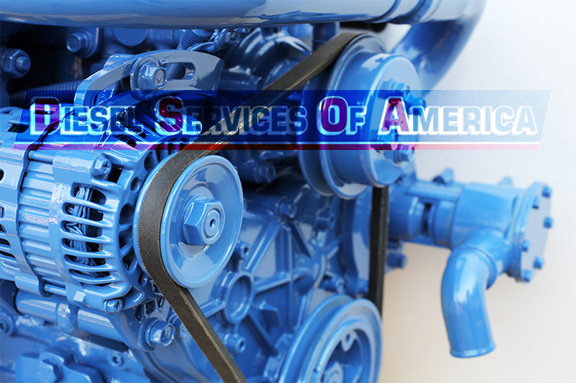
At some point, a marine generator service will be a necessary part of ownership. However, marine generators are durable and can withstand a lot of use if they are properly taken care of and maintained.
To prevent yourself from having to find a generator service often or, worse, because of an emergency, make sure to perform self-maintenance on it regularly. This will not only save you from having to pay for a professional marine generator repair service, but it will also prolong the life of the genset, keep it performing better overall, and reduce the number of costly generator repairs in the future.
10 Marine Generator Service Tips
#1. Complete a quick daily inspection.
- Make a checklist of things you can inspect quickly that include things like:
- Oil level
- Coolant level (be sure to inspect the overflow bottle AND the pressure cap)
- Alternator/water pump belt
- Look around for any signs of leakage under the genset. Finding and fixing a leak early can help you avoid a costly generator service repair later.
#2. Turn off the AC load breaker or switch before starting up your marine generator.
- Only connect the load after it warms up for at least a full minute. Do the same thing when you are preparing to shut the generator down. First, turn off the breaker or switch and let the generator cool down for at least a full minute and then shut the generator off. This can help reduce failures in automatic voltage regulators or diodes, another costly generator service.
#3. Turn the shore power breaker off (if starting the generator from the dock).
- This is done to prevent the genset from connecting to the shore power in case the shore power switch is wearing out, something potentially disastrous even if the connection happens briefly.
#4. Get a new seawater pump every year.
- If the old seawater pump looks good, keep it as a spare. Adding silicon dielectric grease to the impellers makes removal and installation easier.
#5. Change the oil and oil filter twice a year (even for light use or no use).
- Fuel and air filters can be serviced or changed just once a year. It’s best to read and follow the marine generator service recommendations from the manufacturer.
#6. Always maintain 40-50% of the genset’s rated KW load (or higher).
- Marine generators are designed for heavier loads and doing this will make it run better overall. Lighter loads are better for the inverter and will cause excessive carbon to build up in the exhaust elbow. This results in smoke, overheating, failures, and performance issues.
#7. Perform a visual inspection of the exhaust wet elbow at least once yearly.
- Look for rust, cracks, leaks, and distress marks. Replace it immediately to prevent electrical components in the genset from failing.
#8. Inspect zincs every 90 days (if applicable).
- This will give you a better idea of how often they should be changed.
#9. Carry spare generator parts onboard.
- Keep an inventory of spare generator parts that include two fuel filters, one belt, one oil filter, liquid oil, and coolant.
#10. Change out coolant and inspect the heat exchanger every two years.
- High-temperature readings and steam in the exhaust could mean there is something restricting water flow. Check the muffler’s hoses to see if they are hot. This could be a problem with the pump belt, worn impeller, or a plug in the sea strainer, exhaust elbow, or heat exchanger.
Performing these generator service tips can greatly improve the longevity of your marine generator set and reduce the number of expensive generator service repairs in the future. For further help from a professional generator service and repair center, visit Diesel Services of America or call 954-781-1464.
Facebook | Twitter | YouTube | Google+
Generator Service
![]()